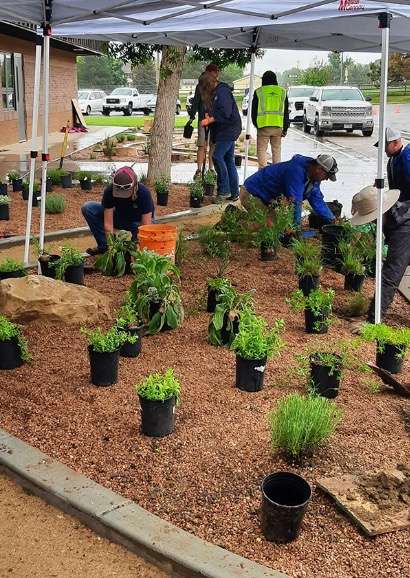Each year, the Center for Green Schools Leaders in Sustainability Fellowship program selects a small group of school district sustainability staff from across the country to meet to connect and collaborate on common goals, challenges and strategies.
Melissa Carroll, resource energy manager for the Thompson School District in Loveland, Colorado, participated in the 2022–2023 fellowship. Through this program, she received support and feedback from the group regarding outreach and education strategies and shared lessons learned from programs such as the turf transformation project at Cottonwood Plains Elementary School.
Solving a local issue
Drought conditions in Colorado are common, and water costs are increasing each year—something Thompson School District is seeking to address through turf (or grass) conversions to native plantings throughout their school grounds. With design support from Denver Botanic Gardens; funding from Northern Water and Colorado Water Conservation Board; and community support from Cottonwood’s parent-teacher organization, in summer 2023, the Cottonwood Plains Elementary School replaced approximately 3,000 square feet of irrigated Kentucky bluegrass with low-water native landscaping that included over 300 plants, walking paths and sitting rocks.
The native plants can withstand drought conditions, while also offering year-round color and providing local habitats for hummingbirds and butterflies. The Thompson School District intends for this space to provide the students a way to connect with nature and a space for the community to learn about landscaping opportunities suitable for the local climate. Teachers are encouraged to use this space to enhance classroom learning on all topics, from biology to art to arithmetic.

